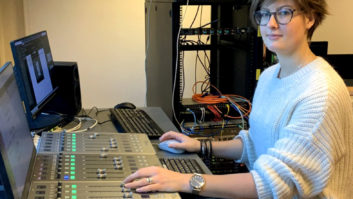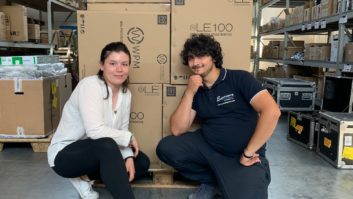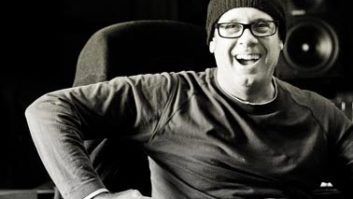Tom Keifer has finally released his long-awaited debut album, The Way Life Goes. Keifer, who was the singer/songwriter/ guitarist of internationally successful rock band Cinderella, has been working on the album for nearly 10 years, and initially conceived it as the members of Cinderella parted company and the record industry itself was experiencing an upheaval. While Keifer never intended for the solo record to take so long to complete, the result is a raw and emotionally engaging recording that leaves “no stone unturned.” Keifer spent time with Pro Sound News to discuss the value perspective can bring over the course of such a project, and how he remained true to his vision.
On Life origins:
I started the record in the throes of a record deal that went south with Cinderella and ended up in the courts. There was a lawsuit and at that time, we were restricted from recording. So I started to work on the solo record— and in light of what we had just gone through, I didn’t want a record company or any lawyers involved, so I decided to produce the record independent of the label. The cool thing about producing it on your own is that you can take all the time you want. It took 10 years to record and produce. We had a great time making the record and I made it with people I really love working with, including a very good friend of mine, Chuck Turner, a very talented engineer and producer here in Nashville. We experimented a lot, recorded, scratched tracks, recorded and re-mixed until it felt like we wanted to put it out.
On gaining perspective:
I don’t care who you are or how long you spend on a record, there are always going to be times when you’ll say, ‘I could have done that better.’ I certainly have had a lot of those feelings on the Cinderella records, although I love them and think we did a good job. On those records, there was no time for objectivity. We worked for six days a week for about six months straight. You’d have one day off a week where you’d try to gather your thoughts and relax for a little bit, then you’re back in the studio trying to figure out whether you got it right or not. On this record, we would take six or seven months off away. It’s amazing when you are working that hard, when get away for a few months and come back and listen. Some of the things you thought that were really cool, you say, ‘Wow, what were we thinking?’ Then there are other things you look at and say, ‘Man, that’s great—let’s not change that.’ Having that objectivity is a cool thing. You correct the things that aren’t holding up, and hold on to the things that are.
On tracking guitars:
I learned from Andy Johns years ago that the best way to mic a Marshall cabinet is to use two [Shure] SM57s. He and I used to argue about that on the Cinderella stuff, since I would always ask to try something different. He would look at me and say, ‘Thomas—I have been doing this for a long time. And if it doesn’t sound right with two 57s, then you change the guitar and the amplifier.’ I learned from experimenting over the years that he was right. He showed me how to position the mics, and it’s just a very true and natural way to mic a cabinet. If you don’t like what that sounds like, then you don’t like your rig.
My guitar setup hasn’t really evolved much over the years. I’ve loved the classics since I was in high school when I first started playing. I still play through Marshall 100-watt Super Leads, the early ’70s ones that have no master volume, and that you just have to crank all the way to get the crunch. Those old Marshall amps just bring the tone of the guitar out and add distortion, crunch and balls without covering up the character of the guitar.
On keeping it natural:
I always want something that feels real. The best way to achieve this is to not over-process or compress the songs while you are recording them. You want to capture a natural sound so that you can do anything you want with it later. That’s why I think we were able to make all the tracks sound like they were all part of the same record, because we recorded them using the same approach. I wanted the tracks to sound very real, organic and unaffected. I’m not into processing so much anymore. We had a lot on the first two Cinderella records, and in retrospect, I wish those records were a little more raw sounding.
On working with talent:
I am a firm believer of letting people be creative and doing their thing. I think when you have talented people in a room who are creative, that’s how you get the best results. Obviously, at the end of the day, if someone is playing something or an engineer is doing something that doesn’t sound like something that I would like, I need to be the one to say ‘I think we need to work on that.’ On this album though, nothing was really a struggle except for the mixing. We went through 18 or 19 mix engineers. Everybody kept wanting to play with effects, but I wanted the mix to be really dry, tight and in your face. We worked with a lot of very talented engineers and really great people, but at the end of the day, the mix is the thing that makes that vision come out of the speakers.





